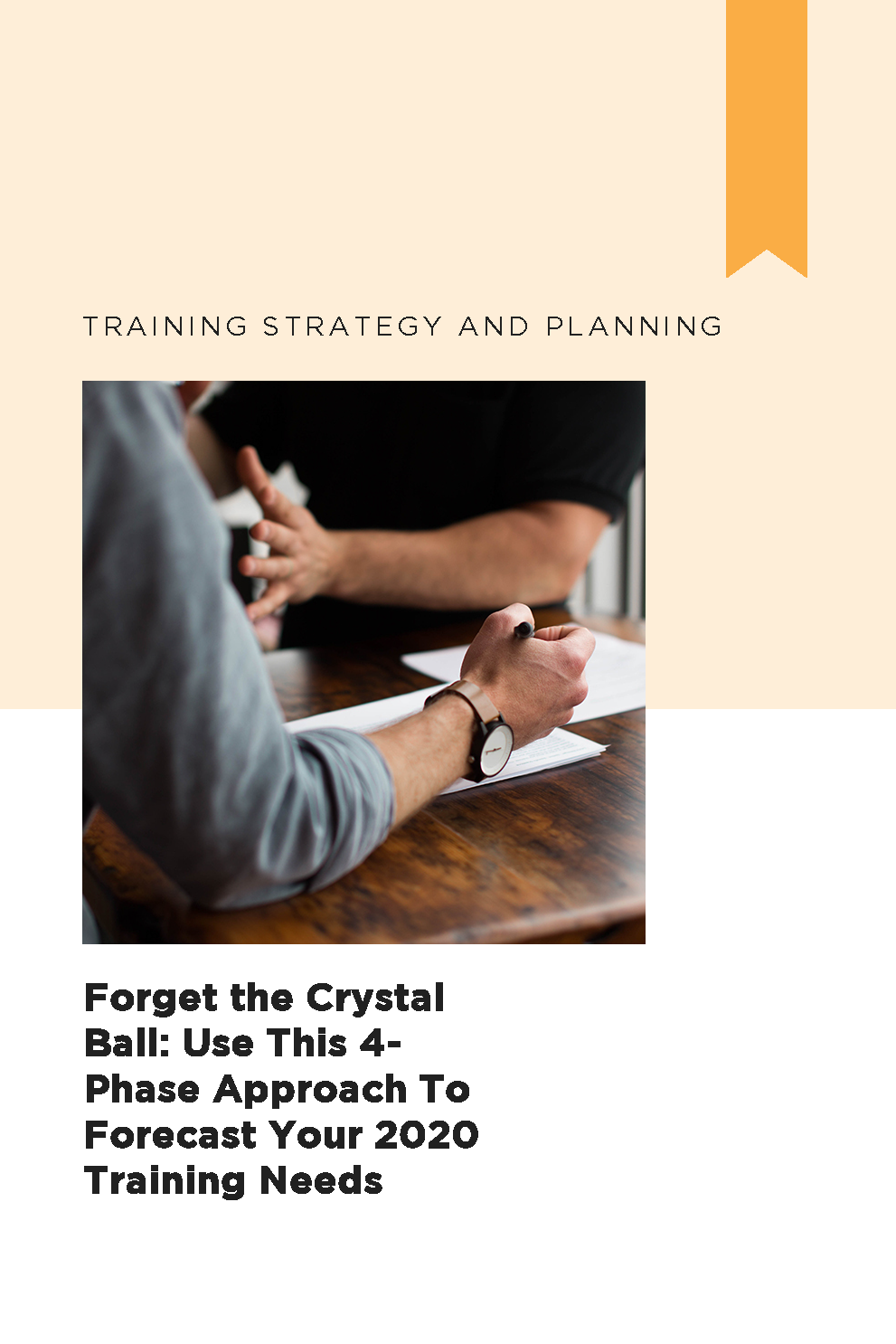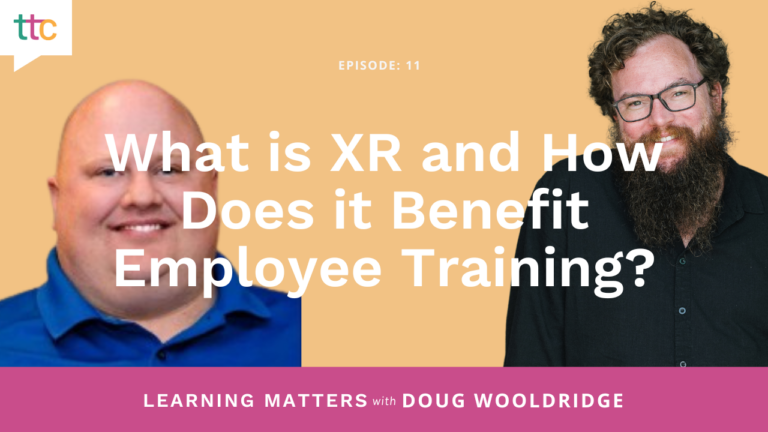Who wants to be a training Nostradamus? If you’re smart, you do.
Great training professionals are always looking to the future. You have to keep an eye on everything: generational differences, new trends in training, technology, etc. — and that doesn’t even touch on all the things you have to watch within your own company. But the importance of forecasting is paramount. If you plan ahead for next year (and the next, and the next…), you’ll have more success securing the budgets and resources you’ll need. And by assessing the current state of affairs, you might even be able to use this year’s “leftover” resources to shore up next year’s needs. Great long-term learning strategies don’t just appear out of nowhere — they come from careful, cross-disciplinary study.
So how can we look into the future with some degree of accuracy? Training certifications, unfortunately, don’t come with a crystal ball. But experience shows us that there are four elements that most of your training needs — and resources — will be based on. Keep an eye on these trends, and you’ll have a crystal-clear view of what’s in store for your training organization.
#1: Knowledge Gaps
Every good trainer knows that examining knowledge gaps is an essential part of training analysis: You’d never try to develop a program without first understanding what the learners already know and what they need to know. In forecasting, analyzing knowledge gaps is a little different. Rather than looking for gaps in a particular skill or process, you must look for deficiencies companywide. Ask yourself two questions:
- What new processes or systems are upcoming or have been put in place recently? In many companies, training is the last thing they consider when implementing new ideas. Chances are pretty good that there’s a group of workers somewhere floundering with a new system because of a lack of training.
- What knowledge gaps from THIS year still haven’t been addressed fully? You probably had a great plan going into this year, but life and business often get in the way. There are likely some items on your agenda that simply won’t be completed or even addressed this year. Which ones will be relevant for next year?
Looking at these macro-level gaps during the year (rather than just at the end) will give you a bird’s eye view of your forecasting needs.
#2: Technology
When I was teaching high school, I was amazed to discover that one of the criteria for our yearly evaluations was “Integrates Technology into Lesson Planning.” What difference does it really make if we use technology, as long as they learn it, right? But, for better or worse, technology has become a common evaluator of training and education programs. You must be aware of what’s coming and ready to react. Looking to 2020, keep an eye on:
- Augmented and virtual reality: They may still seem sci-fi, but they’re easier to implement than you might think.
- Mobile learning: The next generation demands it, and you have to be ready for it.
- Artificial intelligence: efront Learning makes the case that AI “is already resulting in the death of the single skillset. As documented by David Deming, associate professor of Education and Economics at Harvard University, we now see that automation does not translate to higher unemployment rates. On the contrary – as machines take over mundane tasks, employers expect more complex, creative and varied functions from their people.” Will you be ready to train the new workforce?
It’s important to note that keeping up with technology means watching a variety of publications in a broad array of disciplines. New tech won’t just pop up in training trades — it can happen anywhere.
#3: Budget
While we’d all love to live in a perfect world where money for training is plentiful, few of us have that luxury. Understanding your company’s fiscal situation and keeping a close eye on training ROI gives you the opportunity to make reasonable, numbers-based requests for the upcoming years.
If you’re not calculating — and publicizing — numbers for training ROI, you’re missing an opportunity to shine in front of the C-suite. But knowing your ROI is just the beginning. You must be able to use the ROI numbers in your forecasting.
Graber, Post, and Erwin recommend the following steps:
- Identify required knowledge and skills.
- Assess employees.
- Calculate gaps and costs.
- Evaluate training programs.
- Calculate ROI. / Select optimum training.
Budget will always be a factor in training planning and forecasting. Be sure you put on both the macro (company finances) and micro (your ROI) lenses when gazing into the future.
#4: Learning Trends
Trends in learning are constantly changing. Sometimes the new wave is just a fly-by-night idea, but trends are also driven by sociological and generational changes. And, like it or not, you’ll probably be asked to deliver the “next big thing” next year. When looking at learning trends, ask two important questions:
- What will you be teaching? The biggest trend in subject matter seems to be a shift from hard skills to soft, multi-dimensional skills (see “the death of the single skillset” above). Info Consulting Insights analyzed the 2016 Future of Jobs Report from the World Economic Forum and found that:
…by 2020, skills such as Emotional Intelligence and Cognitive Flexibility are expected to be far more critical to business needs. This skills shift is not about developing new capabilities for using technology, but rather a reflection of the growing autonomous role that technology will have in the next few years.
“What we teach” is constantly shifting, and again — these changes won’t just emerge in training publications. We have to keep an eye on our society as a whole to understand the future of training.
- How will you teach it? There are more factors to consider in determining future training techniques than we can list in a hundred blogs, but we can at least look to the immediate future. According to Training Magazine, the top ten shifts for the coming years are:
- From “Training Culture / Push” to “Learning Culture / Pull”
- From “Spoon-Fed” to “Learner-Led”
- From “Static/Broad” to “Adaptive/Personalized”
- From “User-Centered” to “User-Generated”
- From “Design-Led / Company Push” to “Learner-Led / Learner Pull”
- From “Curriculum Driven / Discrete” to “Learner-Empowered / Continuous”
- From “Have to Go / Forced” to “Want to Know / Motivated”
- From “Enterprise-Driven / Guided” to “Learner-Driven / Self-Directed”
- From “Prescriptive” to “Personalized”
- From “Classroom” to “Everywhere”
21st century workers are demanding a different approach to training. Understanding these important shifts can help you acquire the resources you need to take your company into the future.
Nostradamus Would Be Proud
Does it seem like keeping up with training requires us to understand everything about our company and even our world? Well, that’s because it does require a broad-based approach. While some principles of good teaching will never change, education is not a fixed science. And in corporate training, our learning goals are also based on business needs, workforce shifts, and even budgetary requirements. A complete forecasting analysis focuses on multiple elements of the company and the workforce.
And finally, it’s important to expect the unexpected. No matter how much you analyze, you’ll probably be hit with something you never could have anticipated. Let’s face it: Nostradamus may have predicted the future of the planet, but the machinations of large organizations may have been beyond even his vision. Here’s hoping your foresight is 20/20!








